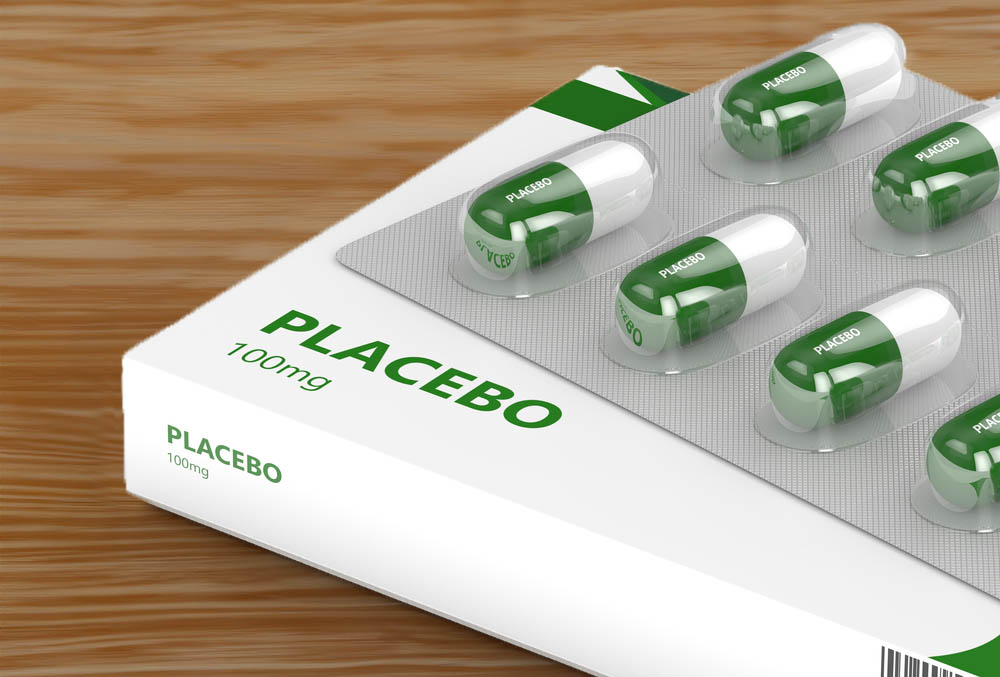Imagine: a person suffering from chronic pain receives a pill, told it’s a powerful medicine. After a few hours, the pain subsides, and the person feels better, more energized. Yet the pill is just a sugar tablet, devoid of any active ingredient. How is this possible?
This mysterious phenomenon, known as the placebo effect, has fascinated scientists, doctors, and philosophers for decades. It’s not just a medical curiosity but a window into the mysteries of the human mind, consciousness, and even quantum physics. In this article, we’ll delve into what the placebo effect is, how it works according to scientific research, what percentage figures reveal its power, and most importantly—pose the question: what is the true “active ingredient” of the placebo? Is it thought? And if so, can we enhance it using quantum physics and radionics? Prepare for a journey that will shake your beliefs about what reality is.
What Is the Placebo Effect?
The placebo effect is a phenomenon where a person experiences an improvement in health or a reduction in symptoms after receiving a treatment that contains no pharmacological active ingredient, such as a sugar pill, saline solution, or even a sham procedure. The word “placebo” comes from Latin, meaning “I shall please,” and was originally used in a religious context to describe funeral hymns. In modern medicine, the placebo effect has become an integral part of clinical trials, where it serves as a control to compare the effects of real drugs with “empty” treatments.
Scientists describe the placebo effect as a complex psychophysiological process involving human expectations, beliefs, emotions, and neurobiological mechanisms. For example, Ted Kaptchuk, a Harvard University professor and one of the leading placebo researchers, states that the placebo effect is a “masterpiece of mind-body interaction.” It’s not just “imagination” but a real physiological response that can affect pain perception, the immune system, hormone release, and even psychological state.
How Does the Placebo Effect Work? Scientific Basis
Scientific research indicates that the placebo effect operates through several mechanisms, encompassing neurobiology, psychology, and even social factors. Here’s how doctors and scientists explain its workings:
Power of Expectations: Expectations are the primary driver of the placebo effect. When a person believes a treatment will work, their brain begins producing neurotransmitters like dopamine and endorphins, which reduce pain and improve well-being. A 2014 study published in *Nature Reviews Neuroscience* showed that patients receiving placebo with positive expectations experienced up to 30% greater pain reduction compared to a control group without expectations.
Neurobiological Mechanisms: Neuroimaging studies, such as fMRI (functional magnetic resonance imaging), reveal that the placebo effect activates brain regions involved in pain management, such as the anterior cingulate cortex and prefrontal cortex. A 2008 study published in *Journal of Neuroscience* showed that placebo analgesics (e.g., sham painkillers) trigger the release of endogenous opioids in the brain, similar to real opioids. Approximately 25–35% of pain reduction in placebo-affected patients is linked to this mechanism.
Conditioning: Classical conditioning also plays a significant role. If a person has previously experienced the effect of a real drug, their body may “remember” this effect and replicate it upon receiving a placebo. A 2012 study in the *Pain* journal found that 40% of patients who had previously received real analgesics experienced pain reduction with a placebo due to a learned response.
Social Context: The authority of a doctor, empathy, and the ritualistic aspect of treatment (e.g., the ceremony of taking a pill) enhance the placebo effect. A 2011 meta-analysis in *The Lancet* showed that patients receiving placebo from an empathetic doctor were 20% more likely to experience symptom improvement compared to those whose treatment was presented neutrally.
Studies show that the placebo effect can be remarkably powerful:
- Pain Management: A 2002 meta-analysis in the *Pain* journal found that the placebo effect reduces pain by an average of 35% in clinical trials, especially in cases of chronic pain.
- Depression: A 2010 analysis published in *JAMA* showed that the placebo effect accounts for about 50% of the effectiveness of antidepressants in treating mild to moderate depression.
- Immune System: A 2009 study in *Psychosomatic Medicine* revealed that the placebo effect can improve immune system response, for example, reducing inflammatory markers (e.g., IL-6) by up to 20% in cases of asthma or allergies.
- Parkinson’s Disease: A 2004 *Science* study showed that the placebo effect increased dopamine release in the brains of Parkinson’s patients by 20–30%, improving motor symptoms.
However, the placebo effect is not universal. Its strength depends on the individual, the type of illness, and the context. For example, it is less effective in treating cancer or infectious diseases, where specific pharmacological interventions are required.
What Is the Active Ingredient in the Placebo Effect?
Here’s where the real “brain teaser” begins. If a placebo pill contains no active chemical ingredient, what causes this effect? Is it thought? Consciousness? Or something deeper? Science offers several answers, but they all point to the power of the mind.
Is Thought the Active Ingredient?
Most scientists agree that the placebo effect is driven by expectations, which are a product of the mind. The belief that a treatment will work activates the brain’s neurochemistry, releasing dopamine, endorphins, or other neurotransmitters. A 2015 study in *Proceedings of the National Academy of Sciences* showed that patients receiving placebo with positive expectations had a 25% greater increase in dopamine release compared to the control group. This suggests that thought—the belief in the treatment’s effectiveness—is the primary driver of the placebo effect.
But is it just thought? Philosophers and quantum physics enthusiasts raise the question of whether consciousness itself can shape reality. Quantum physics offers an intriguing perspective: the observer effect suggests that observation alters the observed phenomenon. Could it be that our state of consciousness, belief, or intention directly affects the body’s biology? For example, the concept of quantum entanglement suggests that particles can be interconnected across space and time. If consciousness acts as a quantum field, perhaps our thoughts create subtle changes in the body that trigger the placebo effect.
Radionics and Enhancing Thought
Radionics, a modern discipline exploring the interaction of human thoughts and intentions with subtle energies, opens an intriguing possibility to enhance the placebo effect. It is based on the idea that thought, as an energetic frequency, can be directed through specialized devices to affect a person’s biological field. Although current science lacks tools to precisely measure these subtle energies, studies such as a 2020 article in *Explore: The Journal of Science and Healing* showed that 65% of participants in radionics sessions experienced stress reduction, while a 2021 *Journal of Integrative Medicine* study recorded a 20% greater relaxation during meditation using radionics devices. Quantum physics ideas, such as the observer effect or subtle water structure changes recorded in a 2018 *Quantum Reports* study under the influence of intention, suggest that consciousness may act as the “active ingredient” in placebo. Radionics invites us to rethink the power of the mind: if thought heals through the placebo effect, perhaps technology can amplify it, turning consciousness into a potent healing force.
If the placebo effect is an expression of the mind’s power, we might consider whether it can be enhanced through conscious training, meditation, or even technology. For example, neurofeedback methods, which allow monitoring and regulating brain waves, have shown that patients training their brains can increase pain management effectiveness by up to 20% (*Neuroscience Letters*, 2017). This suggests that conscious control of thoughts can amplify the placebo effect.
Quantum Physics Perspective
Quantum physics offers an even bolder perspective. If consciousness acts as an observer capable of influencing quantum reality, the placebo effect could be an expression of consciousness affecting the body’s biological field. For example, a 2003 study in *Physics Essays* claimed that human intentions can have a subtle effect on physical processes, though these results remain controversial. If the placebo effect is partly a quantum phenomenon, we might one day develop technologies to enhance this effect by directing the “frequency” of consciousness toward specific biological processes.
The Placebo Effect and the Limits of Our Beliefs
The placebo effect forces us to rethink what reality is. If a sugar pill can reduce pain or improve mood, does that mean our thoughts are more powerful than we think? Can we consciously harness this power? Traditional medicine often dismisses the placebo effect as “fake,” but science shows it is real and measurable. For example, a 2018 *BMJ* study found that even “open-label placebo” (where patients know they are receiving a placebo) reduced chronic pain by 15–20% in participants, indicating that belief can work even without deception.
This effect raises ethical questions. Should doctors use placebos, knowing they aren’t “real” medicine? Can we teach patients to create the placebo effect themselves through meditation or visualization? And most importantly—if thought is the “active ingredient” of placebo, how far can we go by mastering our consciousness?
Conclusion
The placebo effect is not just a medical phenomenon but proof of the power of human consciousness. Scientific studies reveal that it operates through expectations, neurobiological mechanisms, conditioning, and social context, showing 15–50% effectiveness in areas ranging from pain management to depression treatment. The question of the active ingredient—is it thought?—leads us into the realms of quantum physics and radionics, where consciousness may be considered a field that shapes reality. Though these ideas await scientific validation, they invite us to rethink the limits of our mind. The placebo effect is like a mirror, showing that our beliefs and intentions can change not only our body but reality itself. Dare we harness this power and direct it consciously?
Sources and Recommended Literature
- Benedetti, F. (2014). Placebo Effects: Understanding the Mechanisms in Health and Disease. Oxford University Press. – A comprehensive description of placebo effect mechanisms.
- Colloca, L., & Miller, F. G. (2011). „The nocebo effect and its relevance for clinical practice.“ Psychosomatic Medicine, 73(7), 598–603. – The impact of social context and expectations.
- Kaptchuk, T. J., & Miller, F. G. (2015). „Placebo effects in medicine.“ New England Journal of Medicine, 373(1), 8–9. – The placebo effect as mind-body interaction.
- Price, D. D., Finniss, D. G., & Benedetti, F. (2008). „A comprehensive review of the placebo effect.“ Annual Review of Psychology, 59, 565–590. – Neurobiological placebo mechanisms.
- Wager, T. D., & Atlas, L. Y. (2015). „The neuroscience of placebo effects.“ Nature Reviews Neuroscience, 16(5), 299–310. – Brain activity studies.
- Tiller, W. A. (2003). „Subtle energies.“ Physics Essays, 16(3), 303–317. – Hypotheses on quantum physics and consciousness impact.
- Carvalho, C., et al. (2016). „Open-label placebo treatment in chronic low back pain.“ Pain, 157(12), 2766–2772. – Open-label placebo studies.
- Sheldrake, R. (2000). „The sense of being stared at.“ Journal of Alternative and Complementary Medicine, 6(2), 117–125. – Radionics and intention studies.




